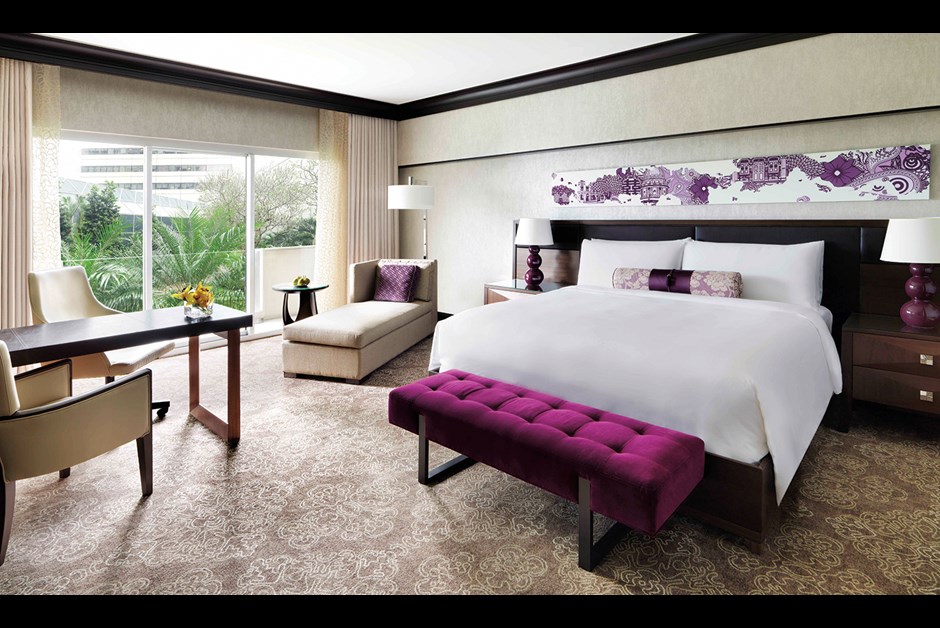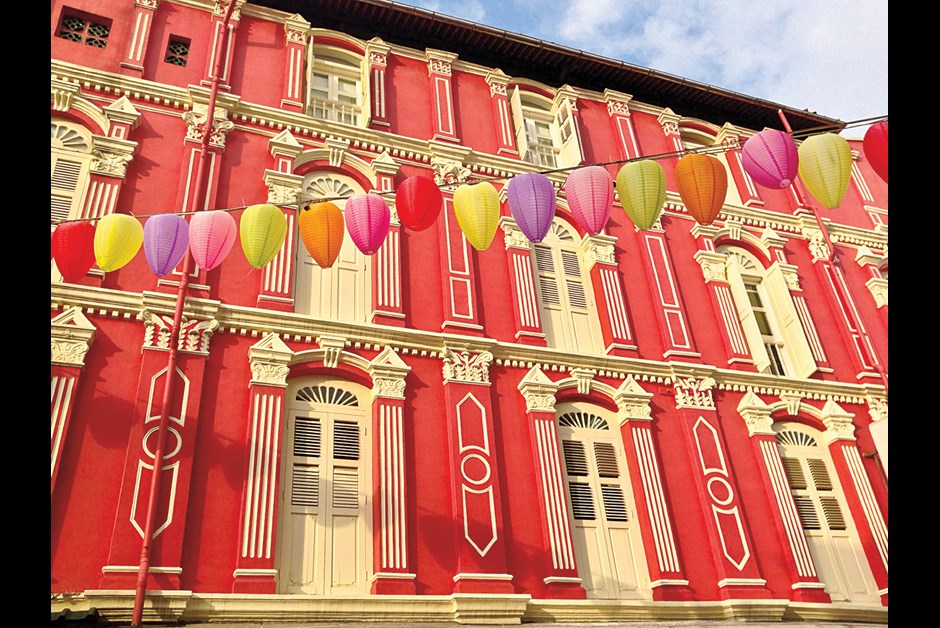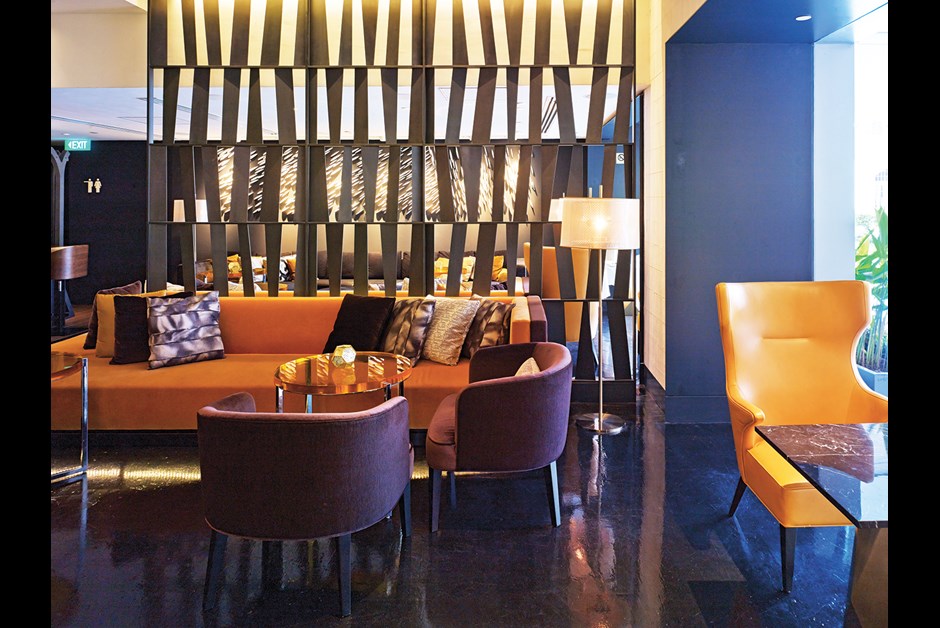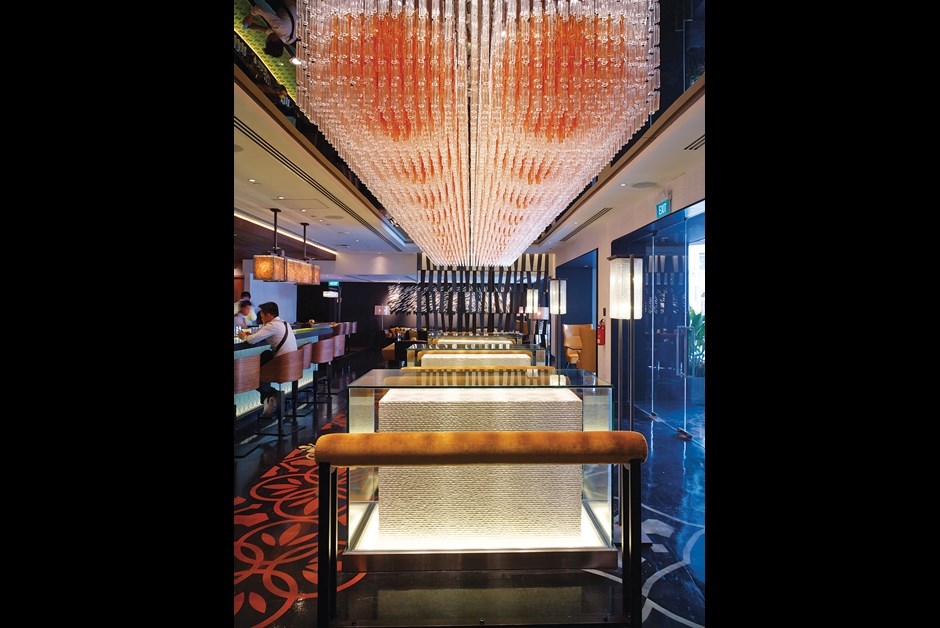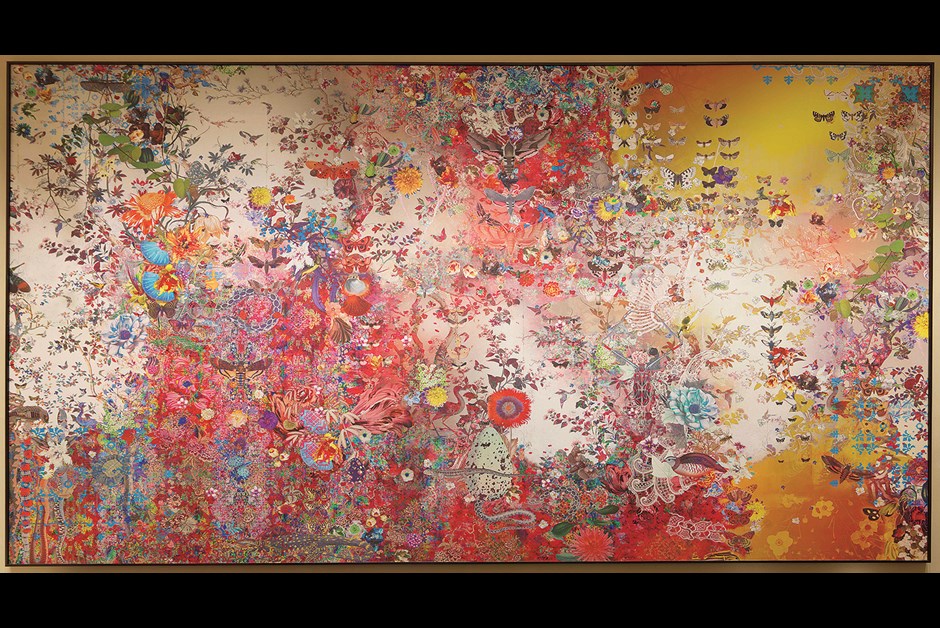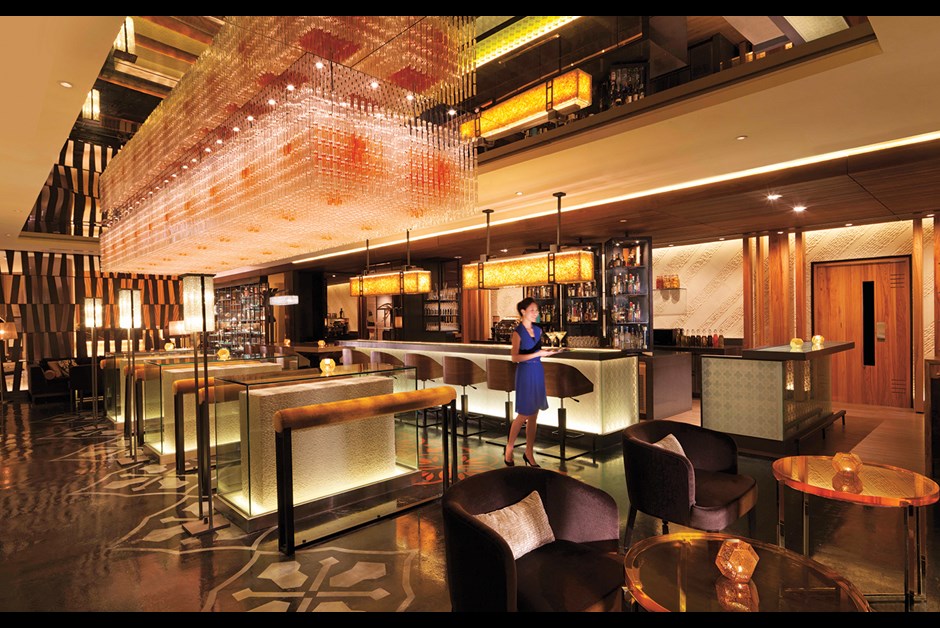Design Special
Design Special
PART 01
Fairmont singapore
Past Meets Presence
A modern mosaic comes to life at Fairmont Singapore,
where renovations take five distinctly local cues from the
city-state’s complex culture.
By Andrew Braithwaite
For centuries, Singapore remained a remote jungle settlement at the southern tip of the Malay Peninsula. Then, in the age of seafaring, it transformed into a key battlefield for global empire-builders, passing from hand to colonial hand by Siamese, Javanese, Portuguese, Dutch and British rulers until its independence – merdeka, in the Malay language – in 1965. The Singapore of today is a dense blend of cultural influences, a tropical rainforest turned concrete jungle. Designed by I.M. Pei and opened in 1986 between Marina Bay and the downtown core, Fairmont Singapore stands at the crossroads of this colorful, complex nation. But as Singapore’s cityscape evolved at lightning speed, so too did the lifestyles of hotel guests, highlighting the need for renovations that would both cement the hotel in the modern world and pay tribute to the city’s unique history and population. To strike the right balance, Fairmont engaged the local teams of two international design firms – Engstrom Design Group (EDG) and Hirsch Bedner Associates (HBA) – to remake the hotel lobby, refresh 371 guest rooms and create Anti:dote, a chic new cocktail bar. The result is a redesign that draws authentic inspiration from five key elements of Singaporean culture.
01 Peranakan Craft
Peranakan is the name for the centuries-old ethnic mix of colonial Chinese and Malay peoples, and the visual motifs of traditional Peranakan craftwork – ornate, complicated patterns normally seen on textiles and clay tiles – dot many of the hotel’s renovated surfaces, from carpets to curtain sheers. “We wanted to reinterpret Peranakan patterns in a modern, luxurious way,” says Michael Goodman, EDG’s senior director for Asia, whose studio designed the new bar and lobby. Anti:dote shows off Peranakan patterns in the black concrete floors and via double-layered etching along the glass-tiled countertop, while a modern chandelier by Czech lighting design studio Lasvit renders traditional diamond-patterned motifs by alternating more than 26,000 hanging amber and transparent borosilicate bars.
02 Black & White Bungalows
Singapore’s era of British colonial rule remains visible in heritage architecture across the city, particularly in the so-called “black-and-white” style of bungalow built to house colonial families. HBA added a touch of history to Fairmont Singapore’s guestrooms by incorporating wooden, plantation-style window shutters, painted black and operable by a traditional rod switch. “It’s rare to see new examples of the black-and-white style in Singapore today,” says Sheila Cayetano, HBA’s lead designer on their renovation of the guest rooms and corridors. The firm also partnered with a young Singaporean artist, Andre Tan, who created three editions of canvas pop art prints to hang above the headboards. The black-and-white pieces incorporate images of key local colonial-era buildings, such as the Old Parliament House and the Fullerton Building.
03 Forces of Nature
Nicknamed “City in a Garden,” Singapore takes its connection to nature seriously, with a city-wide focus on integrating the environment into urban areas. Find a natural touch in the chandelier created by Lasvit for the main lobby. Titled “Playing with Wind,” the piece, done by designer Petra Dickova, features 800 hand-blown glass “bubbles” suspended chaotically on spindly stainless steel branches, evoking what Lasvit calls “the lightness and elusiveness of the wind.” This fixture hovers next to a wall that EDG covered with wooden “fins,” pitched at angles to mimic tree branches. In Anti:dote, where several walls were removed to introduce more natural light, Canadian sculptor Ken Gangbar covered a matte-black wall with a dense, angular swath of protruding white marble discs. “From afar, it looks like wind blowing through a field of grass,” says EDG’s Goodman.
04 Festive color
The centerpiece of the new lobby reflects Singapore’s colorful cultural fusion. Swiss artist Claudia Caviezel tapped into the bright colors that dot this city with a huge, 25-by-15-foot print on canvas. Mounted behind the check-in desk, the work is an explosion of crimson, violet and aquamarine – hues that one might see in the Chinese lanterns of the Mid-Autumn festival, the airborne powder of the Hindu Holi festival in Little India or a fireworks display over Marina Bay. “We probably went through 15 sketches with Claudia before we really felt like the piece expressed that mix of cultures,” says Goodman of the print, which also features leaves, vines, insects and snakes hidden among the intense clash of colors.
05 Modern skyline
With the city’s historic past and lush, colorful present accounted for, Fairmont nods to Singapore’s future with two murals mounted behind the concierge and bell desks. In an abstract mosaic of black and white porcelain tiles, the pattern suggests “a multitude of skyscrapers,” says Goodman of EDG, expressing the relentless pace of modern building that continues to transform Singapore into a 21st-century commercial capital. He continues: “We have a particularly exceptional skyline here, so it’s something we wanted to acknowledge.” With a fresh new interior for I.M. Pei’s own contribution to the concrete jungle, Fairmont Singapore is poised to retain its place of importance on the horizon.
Captions
traditional peranakan tile
almost half the city is made up of green space
paper lanterns hang in singapore’s chinatown
